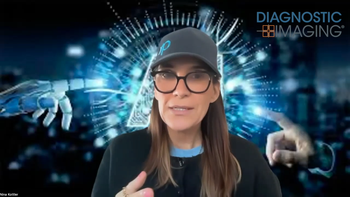
vRad is For Sale: What Does This Mean For Radiology?
The real threat to radiology is corporate medicine.
On March 12, 2015, an article published on Dow Jones’ Private Equity & Venture Capital news and data portal reported that Newstone Capital Partners and Blackstone Group’s GSO Capital Partners had retained Credit Suisse Group to begin the sales process for Virtual Radiologic (vRad). This ends months of insider speculation regarding the future of the largest corporate provider of national teleradiology services, which began to surface even before RSNA in November 2014.
The article, “
While this news is significant, our real focus should not center on vRad itself, but whether vRad’s situation is an anomaly, or within the norm regarding frequently difficult marriages between imaging and radiology groups to venture capital or corporate medicine groups. History seems to suggest that more often than not, these are marriages of convenience, with radiologists either seeking a means to exit or overly aggressive growth strategies.[[{"type":"media","view_mode":"media_crop","fid":"33548","attributes":{"alt":"Tim Myers, MD","class":"media-image media-image-right","id":"media_crop_6696482955526","media_crop_h":"0","media_crop_image_style":"-1","media_crop_instance":"3535","media_crop_rotate":"0","media_crop_scale_h":"0","media_crop_scale_w":"0","media_crop_w":"0","media_crop_x":"0","media_crop_y":"0","style":"float: right; height: 200px; width: 200px; border-width: 0px; border-style: solid; margin: 1px;","title":"Tim Myers, MD","typeof":"foaf:Image"}}]]
Once together, the corporate partners become the dominant force, with the radiologists relegated to supporting roles – or removed altogether. This is a complete reversal of the typical roles seen in private practice and academic radiology and imaging, where radiologists have much more influence in determining tactical and strategic planning and goals, in association with a business manager.
With radiology and imaging generating over $20 billion in professional revenue each year, and with an expected continued rise for the foreseeable future, venture capital groups, hospital corporations, and others with corporate interests will find it increasingly difficult, if not impossible, to ignore the allure of trying to break in to the market. The problem has been – and remains – how to do it without killing the goose that’s laying the golden eggs. Like it or not, radiology has followed a long and sometimes difficult evolution, from the first radiologists to today’s modern groups. This fact is usually ignored at the peril of the investors, and others who would seek to change this model.
During this time, it is also important to bring attention to the pundits, who have continually attacked teleradiology as the root of all evil, or at the very least, responsible for a large part of the issues seen in radiology today. Digging deeper into these superficial attacks on fellow radiologists may show that the people and radiologists involved in radiology are not the issue; the radical departure from the physician-run medical organization to corporations may be the issue, not just in radiology, but also in medicine in general.
Regardless, waiting and watching to see who will be the next to take the plunge, and take over the problems and possibilities at vRad, will be interesting and may help shed some light on the future direction of corporate-radiologist relations. The next question: will the lessons taught to-date be absorbed and acted upon, or will they continue to be ignored?
Newsletter
Stay at the forefront of radiology with the Diagnostic Imaging newsletter, delivering the latest news, clinical insights, and imaging advancements for today’s radiologists.




























